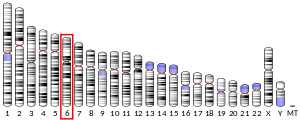
ATG5

4GDK, 4GDL, 4NAW, 4TQ0, 4TQ1, 5D7G947411793ENSG00000057663ENSMUSG00000038160Q9H1Y0Q99J83NM_001286106NM_001286107NM_001286108NM_001286111NM_004849NM_053069NM_001314013NM_001358596NP_001273035NP_001273036NP_001273037NP_001273040NP_004840NP_001300942NP_444299NP_001345525Autophagy related 5 (ATG5) is a protein that, in humans, is encoded by the ATG5 gene located on Chromosome 6. It is an E3 ubi autophagic cell death. ATG5 is a key protein involved in the extension of the phagophoric membrane in autophagic vesicles. It is activated by ATG7 and forms a complex with ATG12 and ATG16L1. This complex is necessary for LC3-I (microtubule-associated proteins 1A/1B light chain 3B) conjugation to PE (phosphatidylethanolamine) to form LC3-II (LC3-phosphatidylethanolamine conjugate). ATG5 can also act as a pro-apoptotic molecule targeted to the mitochondria. Under low levels of DNA damage, ATG5 can translocate to the nucleus and interact with survivin. Autophagy related 5 (ATG5) is a protein that, in humans, is encoded by the ATG5 gene located on Chromosome 6. It is an E3 ubi autophagic cell death. ATG5 is a key protein involved in the extension of the phagophoric membrane in autophagic vesicles. It is activated by ATG7 and forms a complex with ATG12 and ATG16L1. This complex is necessary for LC3-I (microtubule-associated proteins 1A/1B light chain 3B) conjugation to PE (phosphatidylethanolamine) to form LC3-II (LC3-phosphatidylethanolamine conjugate). ATG5 can also act as a pro-apoptotic molecule targeted to the mitochondria. Under low levels of DNA damage, ATG5 can translocate to the nucleus and interact with survivin.
